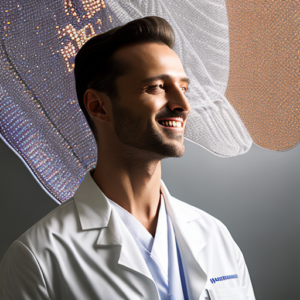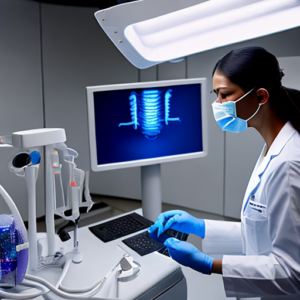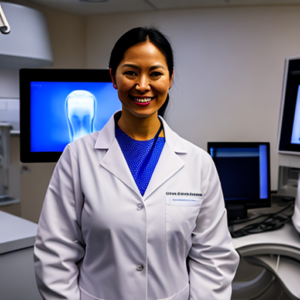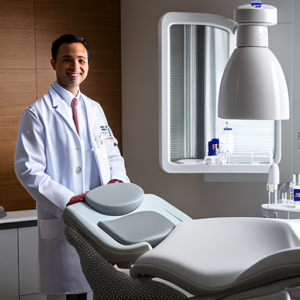Do you ever experience a persistent dry mouth, especially after waking up or during stressful situations? It’s more than just an inconvenience; it could be a significant indicator of compromised oral health and potentially linked to an increased risk of oral cancer. Many people underestimate the vital role saliva plays in protecting our mouths, leading to preventable issues that can significantly impact their well-being. This post delves into recent research highlighting how saliva actively combats cancer development and explores innovative strategies for harnessing its power – a truly fascinating area of dental science.
Understanding Saliva’s Multifaceted Role in Oral Health
Saliva is far more than simply a lubricant for swallowing. It’s a complex biological fluid produced by major and minor salivary glands, playing a critical role in maintaining oral homeostasis. Its composition—including water, electrolytes, enzymes, proteins, antimicrobial substances, and immunoglobulins—is meticulously designed to protect the mouth from damage. The salivary microbiome, a community of microorganisms residing within saliva, also contributes significantly to this protective function. Research indicates that a balanced salivary microbiome can bolster immune defenses against pathogens and potentially reduce cancer risk. Understanding these functions is paramount to effective oral cancer prevention strategies.
Key Components of Saliva and Their Protective Actions
Let’s break down the key components contributing to saliva’s protective abilities:
- Water: Primarily acts as a solvent, facilitating enzymatic reactions and dissolving food particles.
- Electrolytes (Sodium, Potassium): Maintain osmotic balance within the oral cavity, preventing dehydration of tissues and aiding in tooth remineralization.
- Enzymes (Amylase, Lipase): Break down carbohydrates and fats, respectively, assisting digestion and reducing bacterial load. Amylase is particularly important for saliva’s role in carbohydrate metabolism and potentially influencing cancer cell growth.
- Proteins (Mucin, Lysozyme): Mucin forms a protective mucus layer that shields the oral mucosa from mechanical damage and chemical irritants. Lysozyme possesses potent antibacterial properties, targeting gram-positive bacteria commonly found in dental biofilms.
- Antimicrobial Substances (Immunoglobulin A, Secretory IgA): Neutralize pathogens and prevent infections within the mouth. Secretory IgA is particularly crucial for controlling bacterial populations.
- Buffering Agents: Maintain a stable pH level in the oral cavity, preventing enamel erosion caused by acidic environments.
Saliva’s Role in Carcinogen Clearance
Recent research has dramatically shifted our understanding of saliva’s role in cancer prevention. Previously considered primarily a passive protector, saliva is now recognized as an active participant in clearing carcinogens – harmful substances like tobacco and alcohol – from the oral cavity. Studies have demonstrated that saliva contains enzymes, particularly alkaline phosphatase, which effectively deactivates nitrosamines produced during alcohol metabolism. These nitrosamines are potent carcinogens.
Case Study: The Impact of Alcohol Metabolism
A 2018 study published in *Cancer Prevention Research* investigated the effect of alcohol consumption on saliva’s ability to neutralize nitrosamines. Researchers found that individuals who regularly consumed high amounts of alcohol exhibited significantly lower levels of functional alkaline phosphatase in their saliva, leading to a diminished capacity to clear these carcinogenic compounds. This highlights how lifestyle choices directly impact salivary defense mechanisms. A staggering statistic from the National Cancer Institute shows that approximately 30% of oral cancers are linked to tobacco and alcohol use – emphasizing the crucial role of saliva in mitigating this risk.
Carcinogen Clearance Mechanisms
The precise mechanisms behind carcinogen clearance by saliva are still being investigated, but research suggests several key processes:
- Enzymatic Deactivation: As mentioned previously, enzymes like alkaline phosphatase degrade nitrosamines.
- Mucosal Adhesion: The mucus layer traps carcinogens, preventing their direct contact with sensitive oral tissues.
- Increased Mucosal Blood Flow: Saliva promotes blood flow to the mucosa, facilitating the removal of absorbed carcinogens via lymphatic drainage.
Saliva and Inflammation – A Complex Relationship
Saliva isn’t just about fighting bacteria; it plays a vital role in regulating inflammation within the oral cavity. Chronic inflammation is a significant contributor to cancer development, creating a microenvironment that promotes cell proliferation and DNA damage. Dysfunctional saliva production, known as xerostomia, exacerbates this inflammatory response.
Xerostomia and Increased Cancer Risk
Xerostomia, or dry mouth, is frequently associated with conditions like Sjögren’s syndrome, radiation therapy, and certain medications. When salivary flow is reduced, the protective barrier provided by saliva diminishes, increasing susceptibility to inflammation and bacterial colonization. A study published in *Oral Oncology* found that individuals with xerostomia had a significantly higher incidence of oral squamous cell carcinoma compared to those with normal salivary flow. This underscores the importance of addressing dry mouth symptoms promptly.
Saliva’s Anti-Inflammatory Properties
Despite the potential for inflammation when saliva flow is compromised, saliva itself possesses anti-inflammatory properties:
- Anti-inflammatory Cytokines: Saliva contains cytokines that suppress inflammatory pathways.
- Mucosal Repair Factors: Components in saliva stimulate tissue repair and regeneration, minimizing chronic damage.
Saliva Therapy – A Promising Frontier
The growing understanding of saliva’s protective role has led to the exploration of “saliva therapy” as a potential cancer prevention strategy. This approach focuses on restoring or enhancing salivary function to bolster defense mechanisms. Several avenues are being investigated:
Artificial Saliva and Mucosal Lubricants
Over-the-counter artificial saliva products can provide temporary relief for dry mouth sufferers, but their effectiveness in preventing oral cancer is limited. However, some formulations contain added ingredients like hyaluronic acid or chondroitin sulfate which are being investigated for their potential to stimulate mucosal repair and reduce inflammation. These lubricants primarily focus on symptom management rather than a proactive prevention strategy.
Salivary Enzyme Supplementation
Researchers are exploring the possibility of supplementing saliva with specific enzymes, such as alkaline phosphatase, to enhance carcinogen clearance. While still in early stages, preliminary studies have shown promise in reducing nitrosamine levels in individuals consuming alcohol.
Stem Cell Therapy and Saliva-Derived Factors
A particularly exciting area of research involves utilizing stem cells derived from saliva to regenerate damaged oral tissues and stimulate the production of anti-inflammatory factors. This approach aims to rebuild the protective barrier and restore salivary function directly at the site of potential cancer development.
Conclusion
The evidence is mounting: saliva is far more than a simple mouth cleanser; it’s an active player in oral cancer prevention. Recent research has revolutionized our understanding of its role in carcinogen clearance, inflammation control, and mucosal protection. Maintaining optimal salivary function – through good oral hygiene practices, addressing dry mouth symptoms, and potentially exploring innovative therapies – is paramount to safeguarding against this devastating disease. Further research into the complex interplay between saliva, genetics, and lifestyle factors will undoubtedly unlock even more effective strategies for preventing oral cancer.
Key Takeaways
- Saliva contains enzymes that deactivate carcinogens like nitrosamines.
- Reduced salivary flow (xerostomia) increases the risk of inflammation and oral cancer.
- Saliva possesses anti-inflammatory properties, contributing to mucosal protection.
- “Saliva therapy” – approaches aimed at restoring or enhancing salivary function – is a promising area of research.
Frequently Asked Questions (FAQs)
Q: Can dry mouth increase my risk of oral cancer? A: Yes, xerostomia significantly increases the risk by reducing the protective barrier against carcinogens and promoting inflammation.
Q: What can I do to improve my salivary flow if I have dry mouth? A: Consult with your dentist or doctor. They may recommend artificial saliva products, medications, or addressing underlying conditions like Sjögren’s syndrome.
Q: How does tobacco use affect saliva’s protective abilities? A: Tobacco consumption can disrupt salivary flow and alter its composition, reducing its effectiveness in clearing carcinogens.
Q: Is saliva therapy a viable cancer prevention strategy? A: While still under investigation, saliva therapy holds significant promise as a proactive approach to oral cancer prevention, particularly when combined with traditional preventive measures.
















